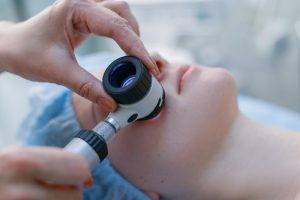The word ‘osteoporosis’ means porous bone. It is a disorder in which bones become thinner and lose their strength over time. Osteoporosis develops when bone density decreases and the body absorbs more bone tissue than it produces. It is commonly referred to as a “silent disease” because you may not notice any changes until a bone breaks. All the while, though, your bones may have been losing strength over the years. In people with osteoporosis, the bones become porous and weak, increasing the risk of fractures even with minor impact or trauma.
World Osteoporosis Day falls on 20 October this year. In addition to osteopenia, let’s look at the more well-known condition relating to lower bone mass density!
Epidemiology
The global prevalence of osteoporosis is unknown because of its asymptomatic nature. However, it is commonly associated with old age as it develops over time. Due to our ageing population and lifestyle habits of the general population, the prevalence of osteoporosis has risen significantly and will continue to rise in the future. As a result, there will also be an increase in bone weakness-related fractures. Statistically speaking, it is estimated that:
- 1 in 3 women and 1 in 5 men over 50 years suffer from osteoporosis
- 35% of postmenopausal women are at risk of developing osteoporosis
- An average post-menopausal woman has a 40% to 50% chance of developing a fracture with a 15% chance that the fracture will occur in the hip in her lifetime
Risk factors
Several factors can increase the likelihood of developing osteoporosis, such as:
- Gender: The risk of osteoporosis in women is three times higher than men as they experience low bone mass and hormonal change during menopause, which predisposes them to the disease.
- Age: Those above 70 years are more at risk of osteoporosis.
- Family history: The risk of osteoporosis increases with having a parent or direct family member with the disease.
- Diet: Low calcium intake also contributes to diminished bone density, bone loss, and increased risk of fracture. People with eating disorders tend to have a lower bone density, regardless of gender.
- Hormones: Osteoporosis is more common in people who have an excess or deficiency of certain hormones on their bodies. For example, declining oestrogen levels in women after menopause is one of the strongest risk factors for developing osteoporosis. Excess thyroid hormone levels can also cause bone loss. It may also occur if you have an overactive adrenal gland.
- Lifestyle: People who spend a lot of time sitting without much physical activity in their daily lives are at a higher risk of osteoporosis than those who are more active. Smoking and alcohol consumption over a long period are also well-known to have detrimental effects on bone mass.
- Drugs: Intake of certain drugs for long durations can interfere with the bone rebuilding process. Some medications associated with osteoporosis are:
- Anti-seizure drugs
- Anti-cancer drug
- Medications to prevent gastric reflux
- Steroids
- Chronic diseases: The risk of developing osteoporosis is higher in people with certain chronic medical conditions, such as:
- Celiac disease
- Inflammatory bowel disease
- Rheumatoid arthritis
- Lupus
- Cancer
Aetiology
Calcium deficiency plays a major role in the development of osteoporosis. Bone strength is mainly determined by two features: bone density and bone quality. Peak bone mass, or the maximum mass of bone achieved by an individual, is typically attained between the ages of 25 and 35. After peak bone mass is attained, both men and women slowly lose bone mass over the remainder of their lifetimes. Because of this inevitable bone mass loss, peak bone mass is an important deciding factor in the development of osteoporosis. Peak bone mass is determined by genetic factors, nutritional status, physical activity, etc.
Our bones are in a constant state of renewal. There should be a normal balance between bone resorption and bone formation in healthy bones. However, with increasing age, the bone resorption process becomes imbalanced, and bone resorption occurs at greater levels than bone formation. This leads to a decrease in bone density which, in severe cases, leads to osteoporosis. This imbalance may begin at different bone sites and is exaggerated in women after menopause.
Clinical features
The sign and symptoms of osteoporosis are:
- Lower back pain that is usually mild
- Loss of height
- Kyphosis (rounding of the spine that results in a hunched back)
- Fracture with minimal trauma, which most commonly occurs in the vertebrae and hip
- Degenerative changes in the vertebrae and hip
Diagnosis
A Dual Energy X-ray Absorptiometry (DEXA) scan is the diagnostic modality of choice to determine bone mineral density. This machine determines the proportion of minerals in the bone. In most cases, vulnerable bones are checked, usually in the hip and spine for signs of mineral loss and bone thinning.
This method is a rapid and non-invasive technique with less radiation exposure but is relatively expensive. In severe cases, an X-ray may show fracture or collapse of the bones in your spine.
Differential Diagnosis
The differential diagnosis of osteoporosis is broad. There are many conditions associated with reducing bone density, including hyperparathyroidism, multiple myeloma, and scurvy. These are all possible differential diagnoses to keep in mind while facing symptoms of osteoporosis.
Complications
The most common complication of osteoporosis is bone fractures, particularly in the spine, hip and wrist. Associated complications from fractures include pain, disability, deformity postural changes, and bedsores resulting from physical inactivity. Fractures that occurred in the spine can cause severe pain and require a long recovery process.
Treatment
Prevention is key in the management of osteoporosis. The goals of treatment are to prevent fractures, slow down or stop bone loss, and achieve an increase in bone mass. Certain measures that are practiced to both prevent and treat osteoporosis are:
- Diet: People at risk of developing osteoporosis are advised to get at least 1200 milligrams of calcium and 100 to 1000 international units of Vitamin D3 per day. Vitamin D helps your body absorb calcium from the intestine. Some calcium-rich foods are cheese, leafy green vegetables, low-fat milk, salmon, tofu, and yogurt, whereas Vitamin D-rich foods include fish oil and cod liver.
- Exercise: Regular exercise can reduce the likelihood of bone fracture in people with osteoporosis as low impact can stimulate bone formation.
- Medications are recommended when osteoporosis has been officially diagnosed with a bone density scan or when a bone fracture associated with osteoporosis occurs. Some medications that may be prescribed include:
- Bisphosphonates: These are the most common medicines to prevent and treat osteoporosis in postmenopausal women. These oral medicines are usually taken once a week or once a month.
- Zoledronic acid: This medication is injected through a vein. Zoledronic acid lowers the calcium release from bone to blood and reduces bone mass loss.
- Calcitonin: Given as an injection, calcitonin slows the rate of bone loss and relieves bone pain. However, it is less effective than bisphosphonates.
- Hormone replacement therapy: Oestrogen therapy is recommended in women with a significant risk for osteoporosis. It is rarely used these days.
Latest advances in the treatment of osteoporosis
In the future, doctors may use stem cell therapy to treat osteoporosis. Researchers found that injecting stem cells in mice reversed osteoporosis and bone loss in a way that could also benefit humans. Researchers are also trying to identify the genes responsible for bone formation in hope of finding new treatments in the future.










